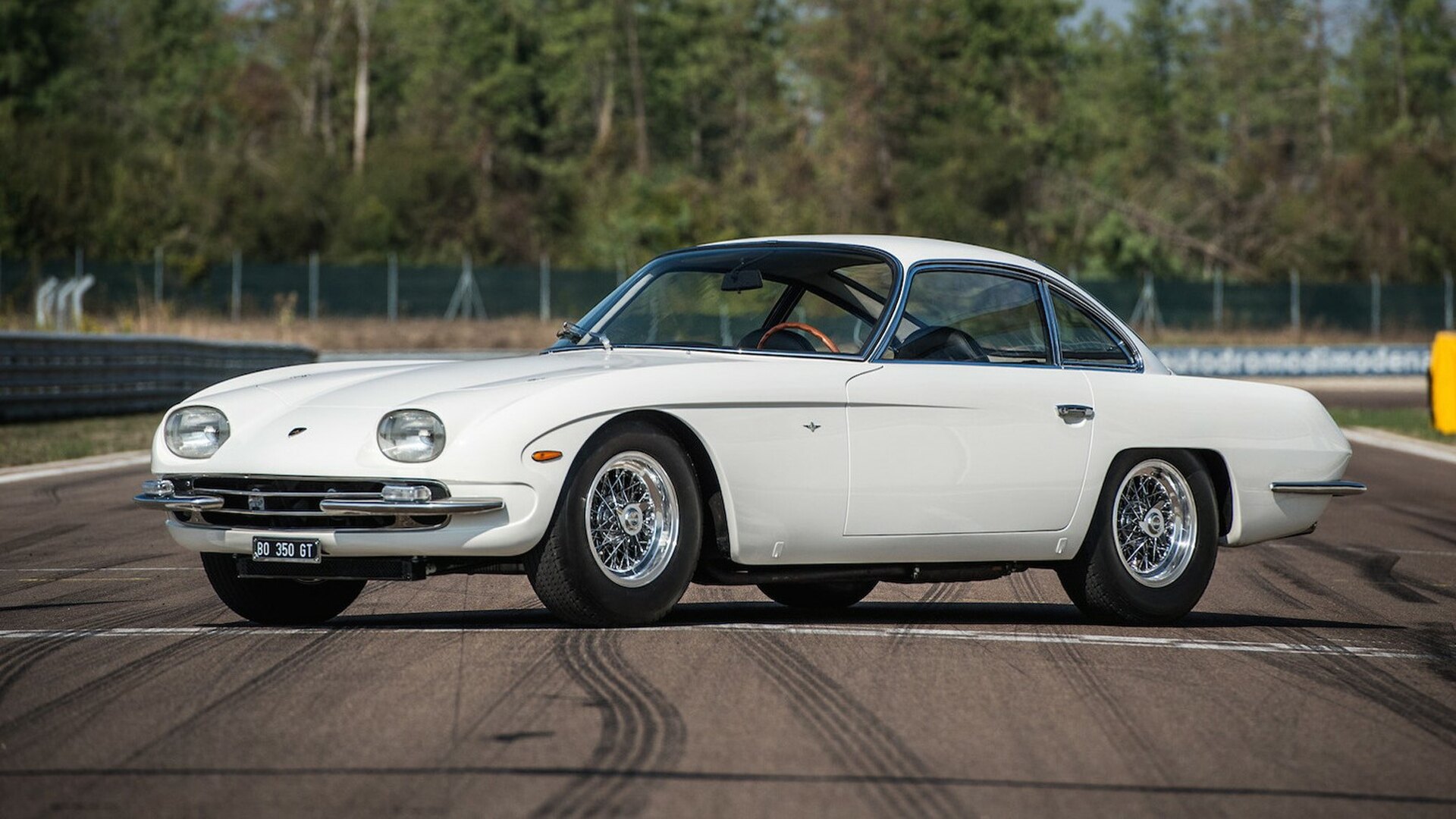Established in 1963, Lamborghini made its official entry into the automotive world the following year, marking six decades since its inaugural vehicle. The pioneering model, the 350 GT, was unveiled to the public at the Geneva auto show in March 1964, marking the commencement of orders for eager enthusiasts.
However, the journey to this milestone began a year earlier when the one-of-a-kind prototype, the 350 GTV, made its debut at the Turin auto show.
Legend has it that a disagreement between Ferruccio Lamborghini and Enzo Ferrari sparked the genesis of the 350 GT. Lamborghini, renowned for his successful tractor business, expressed dissatisfaction with the clutch of his Ferrari to Enzo himself.
When his complaints fell on deaf ears, Lamborghini decided to embark on creating his automotive legacy. The distinguished aluminum body of the 350 GT was crafted by Carrozzeria Touring Superleggera, initially showcased on the 350 GTV with a slightly altered design.

The chassis, engineered by the young Giampaolo Dallara, who later founded the renowned race car constructor Dallara, laid the foundation for Lamborghini’s future success.
The heart of the 350 GT, a 3.5-liter V-12 engine developed by Giotto Bizzarrini, boasted 350 hp and a remarkable 7,000-rpm redline, setting a new standard for performance. The first production 350 GT, bearing chassis number 101, adorned in green with a white interior, graced the Geneva stage.
Despite being retained by Lamborghini for endurance testing, it met an unfortunate end after a rear-end collision. However, the second 350 GT, adorned in silver with a red interior, found its way to a Geneva customer in August 1964, becoming the oldest existing Lamborghini in production.
Meanwhile, the original 350 GTV prototype remains an iconic symbol of Lamborghini’s historic origins.

